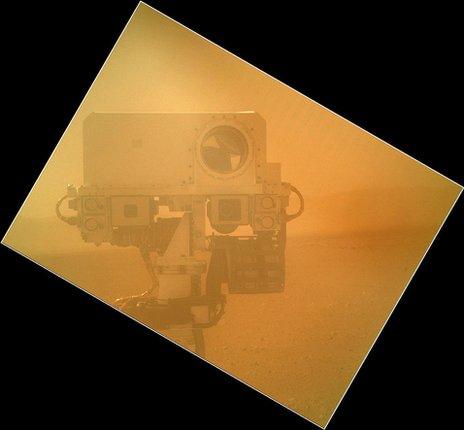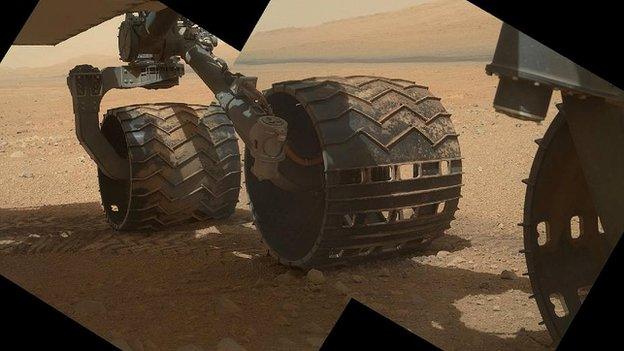Mars rover captures self-portrait
- Published

The angle of the frame reflects the position of the camera
Nasa's Curiosity rover has taken a self-portrait on the Martian surface, using a camera on its robotic arm.
The photo is fuzzy because the dust cover has not yet been removed.
Engineers had been using the navigation and mast cameras to check out instruments and tools on the end of the rover's robot arm.
Curiosity - also known as the Mars Science Laboratory (MSL) rover - is preparing to begin using the tools on its arm.
The image of the rover's mast, showing the Mastcam and Chemcam cameras, was acquired by another imaging instrument known as the Mars Hand Lens Imager (MAHLI).
The dust cover was in the closed position to ensure it was free of debris.
Curiosity has now driven more than 100m from the location on the floor of Gale Crater where it landed a month ago.
Curiosity is heading to a point dubbed Glenelg by scientists.
This is about 300m further to the east from its current position. Satellite pictures point to Glenelg being an intersection of three distinct types of rock terrain. Researchers think it will be a good place to start to characterise the geology of Gale Crater.
The rover's arrival there is still some weeks away, however.

Engineers have also been using cameras to inspect the wheels
- Published6 September 2012
- Published30 August 2012
- Published28 August 2012